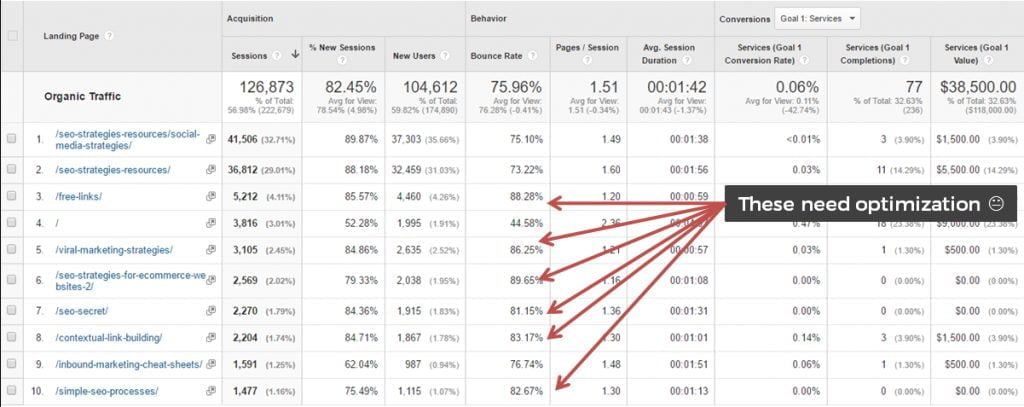The best way to optimize your website for “Satisfaction”:
Provide direct answers to queries frequently used by searchers to find your content, so you can give the right information/experience to visitors fast.
With all the advancements in web and mobile technology, usage has also certainly changed in the past years. Users’ attention span has gone even shorter – from 12 seconds to now 8 (according to a study by Microsoft).
Although, many seasoned digital marketers also recognize and understand how long-form content has changed the game (the average Google first page result contains at least 1,800+ words).
There is a way to fill the gap between these 2 key ranking factors:
- Providing in-depth content (content length).
- Providing answers/completing visitors’ goals quickly (satisfaction).
A couple of ways to optimize for both signals:
- Place the summary, conclusion, key takeaways, or TL;DR version of your content where visitors can almost instantly see them – above the fold.
- Identify the secondary search terms people often also use in finding your content, then placing answers to those queries on the top part of your content.
June 2016 Google Algorithmic Update
For a brief backstory of this post, there’s been a major update late last month that wasn’t officially announced, and surprisingly only a few have actually published anything about it.
Based on Glenn Gabe’s observation, the major volatility has a higher chance of being another “quality update” (could be Panda or Phantom). If your site has experienced a sudden drop in traffic, this post from Gabe will definitely be helpful.
Anyway, I’ve been working on a site that has been recently hit (on the June 26th update). I came up with this approach for re-optimization, when I ran-through a thorough audit for usual filters for Panda-effected sites and have seen that the site I’m working on was actually all good in most aspects (quality of content, duplication, etc…).
We still don’t have actual results for this particular test, but will definitely share it on a future post. However, I’ve tested the method on this blog as well, so that’ll be the focus of this guide instead.
Identify low-performing pages in terms of engagement
Analyze your site’s landing pages, and check those that are not performing well in terms of engagement metrics (bounce rates, average page depth, and average session duration), especially on search-driven visitors.
Behavior > Site Content > Landing Pages – Add Organic Traffic Segment
Identify the keywords they rank for
In Google Search Console, go to Search Traffic > Search Analytics > click on the “Pages” filter > then click on the “Queries” filter
Match above-the-fold content with queries frequently used to find your pages
The abovementioned sample is from a post I wrote back in 2013 that’s actually a comprehensive guide on “how to get contextual links”.
I originally didn’t intend to rank for terms such as “contextual links” and/or “what is a contextual link” – and actually, the post hasn’t prominently defined the term as well.
In testing the method, I placed a definition for the term people often use to get to that page on the introduction part of the content.
Ensure that your pages match the searchers’ intent by directly answering the queries that most visitors use to land on your page.
Aside from how-to guides, you can also implement this approach on other types of content such as lists. The key is to determine and understand what sorts of information people will most-likely want to find instantly on your page based on the queries they mostly use.
Another great example of this optimization being performed is from a recent article by Dan Petrovic at DejanSEO:
Improve searchability
In aiming to satisfy the needs of your organic search visitors, you’ll also be able to improve your pages’ search visibility.
For instance, the sample I’ve cited above from this blog acquired the Google Answer Box result for the keyword(s) it’s being frequently searched for – after a day of implementing the optimization process.
The page was also able to be recognized for several other related search terms.
Moreover, improving a page’s search visibility, especially for informational queries, can exponentially improve your pages’ likelihood of attracting more natural links (and apparently, links still rule).
There are also other ways you can optimize your pages with the primary aim of satisfying its users (check the other resources below). It doesn’t just solely work on content-heavy pages, as you can also use the same mentality it on transactional/product pages as well.
Further reading on Satisfaction as a ranking factor:
Follow me on Twitter @jasonacidre.








